Changes in patellar morphology following surgical correction of recurrent patellar dislocation in children
- PMID: 34656140
- PMCID: PMC8520291
- DOI: 10.1186/s13018-021-02779-7
Changes in patellar morphology following surgical correction of recurrent patellar dislocation in children
Abstract
Background: The aim of this study was to evaluate patellar morphological changes following surgical correction of recurrent patellar dislocation in children.
Methods: A total of 35 immature children aged 5 to 10 years who suffered from bilateral recurrent patellar dislocation associated with abnormal patella morphology were enrolled in this study. The knees with the most frequent dislocations (treated with medial patellar retinacular plasty) were selected as the study group (SG), and those undergoing conservative treatment for the contralateral knee were selected as the control group (CG). Computed tomography (CT) scans were performed on all children preoperatively and at the last follow-up to evaluate morphological characteristics of the patella.
Results: All the radiological parameters of the patella showed no significant difference between the two groups preoperatively. At the last follow-up for CT scans, no significant differences were found for the relative patellar width (SG, 54.61%; CG, 52.87%; P = 0.086) and the relative patellar thickness (SG, 26.07%; CG, 25.02%; P = 0.243). The radiological parameters including Wiberg angle (SG, 136.25°; CG, 122.65°; P < 0.001), modified Wiberg index (SG, 1.23; CG, 2.65; P < 0.001), and lateral patellar facet angle (SG, 23.35°; CG, 15.26°; P < 0.001) showed statistical differences between the two groups.
Conclusions: The patellar morphology can be improved by early surgical correction in children with recurrent patellar dislocation. Therefore, early intervention is of great importance for children diagnosed with recurrent patellar dislocation.
Keywords: Children; Knee; Morphology; Patella; Recurrent patellar dislocation.
© 2021. The Author(s).
Conflict of interest statement
The authors declare that they have no competing interests.
Figures
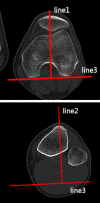



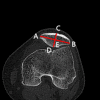
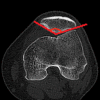
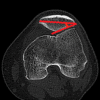
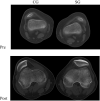
Similar articles
-
Changes in Patellar Morphology Following Soft Tissue Surgical Correction of Recurrent Patellar Dislocation in Children with Low-Grade Trochlear Dysplasia.Orthop Surg. 2022 Aug;14(8):1730-1742. doi: 10.1111/os.13193. Epub 2022 Jul 11. Orthop Surg. 2022. PMID: 35818665 Free PMC article.
-
Changes in femoral trochlear morphology following surgical correction of recurrent patellar dislocation associated with trochlear dysplasia in children.Bone Joint J. 2018 Jun 1;100-B(6):811-821. doi: 10.1302/0301-620X.100B6.BJJ-2017-1295.R1. Bone Joint J. 2018. PMID: 29855234
-
The morphology of patella changed significantly after soft tissue correction for children with recurrent patella dislocation.BMC Musculoskelet Disord. 2020 Dec 10;21(1):833. doi: 10.1186/s12891-020-03846-6. BMC Musculoskelet Disord. 2020. PMID: 33302928 Free PMC article.
-
Imaging assessment of patellar instability and its treatment in children and adolescents.Pediatr Radiol. 2016 May;46(5):618-36. doi: 10.1007/s00247-015-3520-8. Epub 2016 Feb 9. Pediatr Radiol. 2016. PMID: 26860094 Review.
-
Conservative Management of Neglected Post-Traumatic Chronic Patellar Dislocation: A Case Report and Literature Review.JBJS Case Connect. 2020 Jan-Mar;10(1):e0041. doi: 10.2106/JBJS.CC.19.00041. JBJS Case Connect. 2020. PMID: 32044780 Review.
Cited by
-
Arthroscopic reconstruction of the medial patellofemoral ligament in skeletally immature patients using the modified sling procedure: a novel technique for MPFL reconstruction.J Orthop Surg Res. 2023 May 5;18(1):334. doi: 10.1186/s13018-023-03775-9. J Orthop Surg Res. 2023. PMID: 37147697 Free PMC article.
-
The Matrix Approach to Patellar Instability.Cureus. 2024 Aug 24;16(8):e67703. doi: 10.7759/cureus.67703. eCollection 2024 Aug. Cureus. 2024. PMID: 39318946 Free PMC article.
-
Effect of Patellar Morphology on the Risk of Osteochondral Fracture after Patellar Dislocation: A Cross-sectional Study.Orthop Surg. 2024 May;16(5):1089-1100. doi: 10.1111/os.14036. Epub 2024 Apr 1. Orthop Surg. 2024. PMID: 38561949 Free PMC article.
References
MeSH terms
Grants and funding
LinkOut - more resources
Full Text Sources

